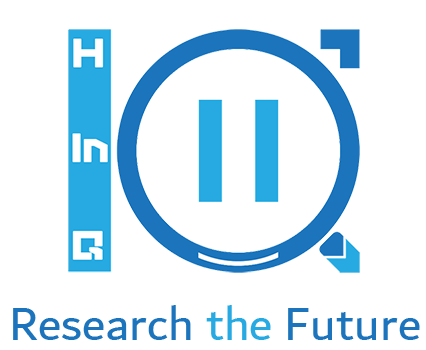Introduction – Wall Street Meets the Algorithm
For decades, Wall Street has relied on a blend of human intuition, historical data, and economic indicators to forecast financial trends. But now, a new player is rewriting the rules: artificial intelligence. What started as a tech buzzword has quickly evolved into a powerful tool that is reshaping how financial professionals predict markets, budget resources, and manage risk.
From hedge funds using machine learning to forecast asset prices to corporate finance teams leveraging predictive analytics for budgeting, AI is no longer a fringe innovation. It has become a competitive edge. The question is no longer whether AI will impact financial forecasting, but how much it already has.
With algorithms capable of analyzing millions of data points in seconds, identifying hidden patterns, and continuously learning from new inputs, AI offers speed and scope beyond human capabilities. But with this rise comes a fair share of skepticism. Can algorithms really outperform seasoned analysts? Is AI a threat to traditional finance roles, or a tool to amplify their effectiveness?
In this article, we explore the current state of AI-powered forecasting, how it compares to traditional methods, and what it means for the future of financial decision-making.
The Rise of AI in Financial Forecasting
Artificial intelligence is no longer the future of finance; it is the present. Financial institutions across the spectrum, from fintech startups to global investment firms, are integrating AI tools to enhance their forecasting capabilities. This shift is driven by the need for greater speed, accuracy, and adaptability in an increasingly complex market environment.
AI-powered forecasting tools are being used to analyze stock movements, detect economic shifts, predict consumer behavior, and optimize budgeting strategies. Unlike traditional systems that often rely on static models and historical trends, AI systems evolve with new data, making them far more responsive to real-world changes.
Large banks are deploying AI to manage portfolio risk and identify investment opportunities in real time. Meanwhile, companies are using AI-driven analytics to project revenues, allocate budgets, and improve operational efficiency. In marketing and sales, predictive algorithms help forecast demand, segment customers, and plan campaigns with remarkable precision.
This growing adoption signals a broader trend. Decision-makers are beginning to trust data-driven models not just as advisory tools but as critical elements in strategic planning. AI is not just automating finance. It is transforming how financial forecasting is understood and executed.
How AI Makes Financial Predictions
At the core of AI-powered forecasting is a blend of machine learning, natural language processing, and big data analytics. These technologies work together to process vast volumes of information, recognize complex patterns, and generate forecasts that would be nearly impossible for humans to produce at the same speed or scale.
Machine learning algorithms are trained on historical financial data and continuously updated with new inputs. They learn from patterns in stock prices, market signals, economic reports, and even news articles or social media sentiment. This ability to digest both structured and unstructured data allows AI to create models that are dynamic and adaptive.
Natural language processing plays a key role in interpreting financial news, earnings calls, and regulatory updates. AI can analyze the tone and context of language to assess market sentiment, often reacting to changes faster than traditional analysis tools.
The result is a forecasting system that is not only fast but also increasingly precise. While no model can predict the future with certainty, AI dramatically reduces the margin of error by continuously learning and refining its predictions. It is this combination of speed, scale, and self-improvement that sets AI apart from traditional financial forecasting methods.
AI vs. Traditional Forecasting: Who’s Winning?
Traditional financial forecasting has long relied on historical trends, statistical models, and expert intuition. While effective in many contexts, these methods often struggle to adapt quickly to sudden market changes or account for complex, multi-layered data. This is where AI begins to shine.
AI models process massive data sets in real time, identifying subtle patterns and anomalies that might escape even the most experienced analysts. They can factor in variables ranging from global news and economic indicators to consumer sentiment and social media chatter. The result is a forecasting system that is not only faster but also more adaptable to dynamic market conditions.
In practice, AI often complements rather than replaces human expertise. For instance, AI might detect an unusual trend in credit card spending that prompts a financial analyst to investigate further. In budgeting, AI tools can simulate multiple financial scenarios instantly, giving decision-makers a broader view of possible outcomes.
Despite its advantages, AI is not infallible. It depends heavily on the quality of the data it consumes and can sometimes produce results that lack clear explanations. Still, in many cases, AI-enhanced forecasting is proving to be more accurate and responsive than traditional methods, tipping the balance in its favor.
Real-World Use Cases and Industry Impact
AI is not just a theoretical improvement in financial forecasting; it is already delivering measurable results across industries. In investment management, firms use AI to analyze global markets, forecast asset prices, and automate portfolio rebalancing. Hedge funds and trading desks rely on predictive algorithms to make faster, more informed trades based on real-time market conditions.
Corporate finance teams apply AI tools to streamline budgeting, project cash flows, and assess financial risks. These models can simulate multiple business scenarios, helping organizations prepare for economic shifts, supply chain disruptions, or fluctuating demand. By incorporating live data, AI-driven forecasts are more current and flexible than static spreadsheets.
Marketing departments also benefit from AI forecasting. Predictive analytics help allocate advertising budgets, forecast campaign performance, and optimize spending based on consumer behavior patterns. The result is improved ROI and better alignment with business goals.
Even governments and regulatory agencies are exploring AI for economic planning, tax modeling, and fraud detection. Across all these domains, the common thread is clear: AI enables faster, smarter, and more strategic decision-making.
These real-world applications demonstrate that AI is not just enhancing financial forecasting. It is redefining what is possible when data becomes actionable at scale.
Challenges, Ethics, and the Road Ahead
While AI brings impressive capabilities to financial forecasting, it is not without challenges. One of the most significant concerns is data quality. AI models are only as good as the data they are trained on. Inaccurate, biased, or incomplete data can lead to flawed predictions that mislead decision-makers or reinforce systemic issues.
Another major concern is transparency. Many AI systems function as “black boxes,” making it difficult to understand how specific predictions are generated. For finance professionals, this lack of interpretability can be problematic, especially in high-stakes environments where accountability and compliance are critical.
Ethical considerations also play a growing role. The use of sensitive financial and personal data requires strict safeguards to protect privacy. As AI systems become more embedded in decision-making, ensuring that they operate fairly and without unintended bias becomes essential.
Despite these challenges, the future of AI in financial forecasting remains promising. Advances in explainable AI, improved regulatory frameworks, and greater collaboration between data scientists and finance professionals are helping address current limitations.
The road ahead is not just about perfecting technology. It is about building trust, improving transparency, and making sure that AI enhances, rather than replaces, human judgment in financial decision-making.
Ressources :
- https://www.mckinsey.com/business-functions/mckinsey-digital/our-insights/how-ai-will-transform-financial-services
- https://www.weforum.org/agenda/2023/10/artificial-intelligence-ai-in-finance/
- https://hbr.org/2020/02/ai-in-finance-is-here-to-stay
- https://www.investopedia.com/terms/a/artificial-intelligence-ai.asp
- https://h-in-q.com/analytics/



